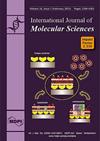Molecular, Cellular and Functional Effects of Radiation-Induced Brain Injury: A Review
IF 5.6
2区 生物学
引用次数: 96
Abstract
Radiation therapy is the most effective non-surgical treatment of primary brain tumors and metastases. Preclinical studies have provided valuable insights into pathogenesis of radiation-induced injury to the central nervous system. Radiation-induced brain injury can damage neuronal, glial and vascular compartments of the brain and may lead to molecular, cellular and functional changes. Given its central role in memory and adult neurogenesis, the majority of studies have focused on the hippocampus. These findings suggested that hippocampal avoidance in cranial radiotherapy prevents radiation-induced cognitive impairment of patients. However, multiple rodent studies have shown that this problem is more complex. As the radiation-induced cognitive impairment reflects hippocampal and non-hippocampal compartments, it is of critical importance to investigate molecular, cellular and functional modifications in various brain regions as well as their integration at clinically relevant doses and schedules. We here provide a literature overview, including our previously published results, in order to support the translation of preclinical findings to clinical practice, and improve the physical and mental status of patients with brain tumors.辐射致脑损伤的分子、细胞和功能效应:综述
放射治疗是原发性脑肿瘤和转移瘤最有效的非手术治疗方法。临床前研究为辐射致中枢神经系统损伤的发病机制提供了有价值的见解。辐射引起的脑损伤可损伤大脑的神经元、神经胶质和血管室,并可能导致分子、细胞和功能改变。鉴于海马体在记忆和成人神经发生中的核心作用,大多数研究都集中在海马体上。这些发现表明,海马回避在颅脑放疗中可以防止患者的辐射引起的认知障碍。然而,多项啮齿类动物研究表明,这个问题要复杂得多。由于辐射引起的认知损伤反映海马和非海马区室,因此在临床相关剂量和时间表下,研究脑各区域的分子、细胞和功能改变及其整合具有重要意义。我们在此提供文献综述,包括我们之前发表的结果,以支持临床前研究结果转化为临床实践,并改善脑肿瘤患者的身心状态。
本文章由计算机程序翻译,如有差异,请以英文原文为准。
求助全文
约1分钟内获得全文
求助全文
来源期刊
自引率
10.70%
发文量
13472
审稿时长
1.7 months
期刊介绍:
The International Journal of Molecular Sciences (ISSN 1422-0067) provides an advanced forum for chemistry, molecular physics (chemical physics and physical chemistry) and molecular biology. It publishes research articles, reviews, communications and short notes. Our aim is to encourage scientists to publish their theoretical and experimental results in as much detail as possible. Therefore, there is no restriction on the length of the papers or the number of electronics supplementary files. For articles with computational results, the full experimental details must be provided so that the results can be reproduced. Electronic files regarding the full details of the calculation and experimental procedure, if unable to be published in a normal way, can be deposited as supplementary material (including animated pictures, videos, interactive Excel sheets, software executables and others).

 求助内容:
求助内容: 应助结果提醒方式:
应助结果提醒方式:


